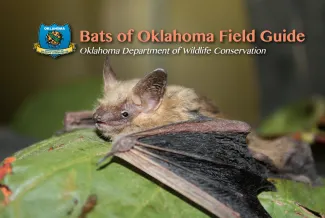
Whether you live in Oklahoma's prairies or forests, chances are high that you have bats as neighbors. The Wildlife Department's "Bats of Oklahoma Field Guide" gives a great introduction to these winged, insect-eating neighbors. Check out the guide to get photos, range maps, tips for identification, and fun facts about the flying mammals that have been documented in our state.
? After traveling up to 1,000 miles, Oklahoma's population of pregnant Mexican free-tailed bats settle into four maternity colonies in the western third of the state. In June, after a 77 - 100 day gestation period, they give birth to a single pup while hanging upside down. The pup takes 90 seconds to pass through the birth canal and is about 25 percent of its mother's body weight.
? The Townsend's big-eared bat is one of 20-plus species found in the state, and one of two Oklahoma species with remarkably large ears. These 1-inch long ears are often rolled up during hibernation.
? The eastern red bat is an expert in disguise. So much so, that it can be virtually undetectable when it roosts among tree leaves. When the temperatures drop, the bat may move to beds of leaves that cover the forest floor. This roost site is risky – prescribed and natural fires may burn through when the bat is in a lowered metabolic state called torpor – but it may stir more quickly with fire cues like smoke.
? Oklahoma’s bats are primarily insect eaters and must adjust when their food source goes dormant in the winter. A majority of our bat species stay in Oklahoma and hibernate in caves and mines but others choose to migrate to locations where insects are still abundant.
? The ability to fly separates bats from all other mammals and allows these winged acrobats to explore the night sky. Bats not only use echolocation to avoid flying into objects, but also to catch flying insects or even glean stationary insects from leaves while the bat is in flight.